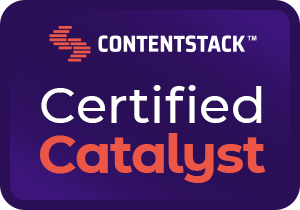What's the Best Serverless Solution?
2023-01-20Navigating the Serverless Landscape: Comparing SaaS Platform Leaders
In the dynamic world of serverless computing, numerous Software as a Service (SaaS) platforms have claimed their stake as leaders in the industry, each bringing their unique strengths to the table. Today, we'll compare seven key players: AWS Lambda, Google Cloud Functions, Microsoft Azure Functions, Vercel, Heroku, Fly.io, and Digital Ocean.
Before we dive into the comparison, let's briefly define each platform:
AWS Lambda: As part of Amazon Web Services (AWS), Lambda is one of the pioneers in the serverless space. It allows developers to run code without worrying about managing servers, providing automatic scalability.
Google Cloud Functions: This is Google's take on serverless, allowing developers to create single-purpose functions that respond to cloud events without the need for a server or runtime environment.
Microsoft Azure Functions: Azure Functions, the serverless solution from Microsoft, enables developers to execute code in response to a variety of triggers, such as HTTP requests or database modifications, and scales according to demand.
Vercel: Known for its developer-friendly interface and strong support for JavaScript frameworks (like Next.js and React), Vercel emphasizes ease of use and optimized performance.
Heroku: A platform as a service (PaaS) that abstracts away infrastructure management, Heroku supports several programming languages and offers a clean, user-friendly interface that's great for rapid application development.
Fly.io: This is an open-source platform that focuses on speed and global availability. It's known for providing edge computing capabilities, aiming to run your applications as close as possible to your users.
Digital Ocean: Known for its simplicity and robust community, Digital Ocean offers a range of cloud-based services, including scalable compute platform with add-on storage, security, and monitoring capabilities.
While each platform offers serverless capabilities, they vary in terms of their features, pricing, ease of use, and scalability. Here is a quick comparison:
| Platform | Key Features | Pricing Model | Ease of Use | Scalability |
|---|---|---|---|---|
| AWS Lambda | Supports many programming languages, automatic scaling, robust ecosystem | Pay per execution | Requires some AWS knowledge | High |
| Google Cloud Functions | Integrated with Google Cloud services, event-driven, supports Node.js, Python, and Go | Pay per execution | Smooth user experience, but Google Cloud knowledge helps | High |
| Microsoft Azure Functions | Integrates well with other Azure services, supports a wide range of languages, event-driven | Pay per execution | Requires familiarity with Azure, but offers good documentation | High |
| Vercel | Supports many modern front-end frameworks, automatic SSL, global CDN | Free for hobby projects, paid plans for professional use | Very developer-friendly | High |
| Heroku | Supports many languages, easy deployment, add-ons for extended functionality | Free tier available, pay as you grow | User-friendly interface, great for beginners | Moderate |
| Fly.io | Edge computing, supports Docker, built-in CDN | Pay for actual use (RAM, CPU, and data transfer) | Some learning curve, but great documentation | High |
| Digital Ocean | Droplets (VMs), Managed Databases, Kubernetes service, VPC networking | Based on resources (hourly or monthly) | Very user-friendly, extensive community and resources | Moderate |
Each of these platforms has its unique strengths. AWS Lambda, Google Cloud Functions, and Azure Functions are deeply integrated into their respective cloud ecosystems and offer extensive scalability. In contrast, Vercel and Heroku prioritize developer




